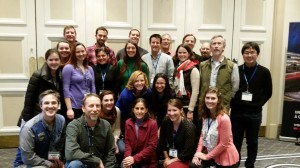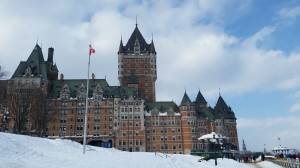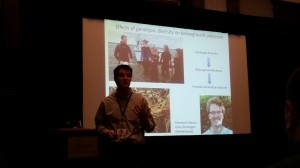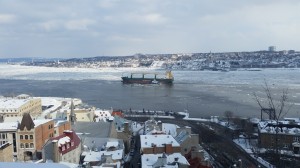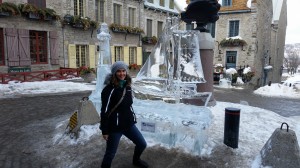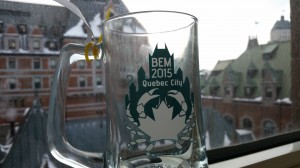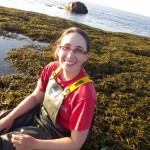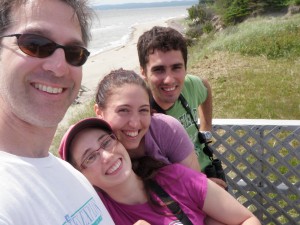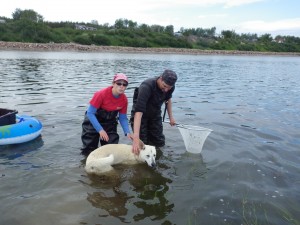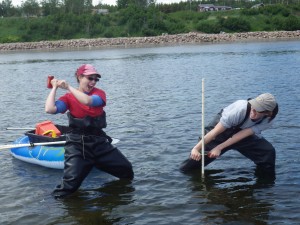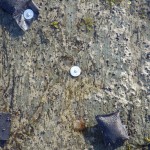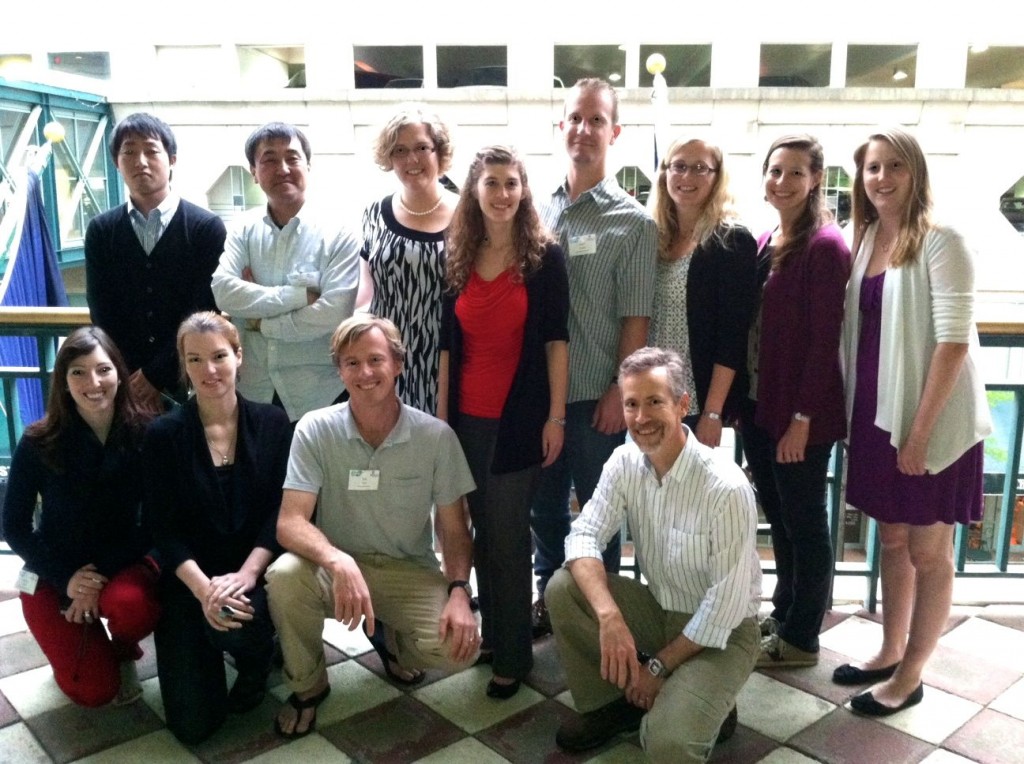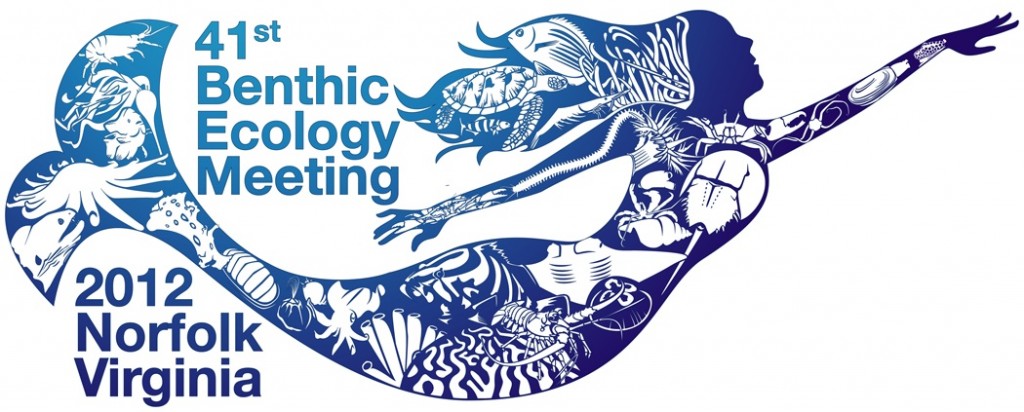ZEN Meeting in Quebec City, Canada
by Pamela Reynolds (ZEN coordinator & postdoc)
Earlier this month over 30 ZEN participants – faculty, students and staff from over half of our partner sites – met at the annual Benthic Ecology Meeting.
This year the meeting was held in the stunning Chateau Frontenac overlooking the St. Lawrence River in Quebec City, Quebec, Canada. While it was cold and snowy outside, the engaging science made it warm and lively inside. Our ZEN partners presented on their local research – on topics from seagrass habitat fragmentation and mesograzer complementarity, to mutualisms, disease dynamics, biodiversity, and restoration.
While the other meeting participants spent the open session on Friday afternoon to get out of the hotel and explore Quebec’s snowsports, our ZEN partners showed their true dedication by staying to discuss more science and plan for our upcoming field season. We even had 7 ZEN partners – from Vancouver to Sweden – who couldn’t be there in person Skype into our ZEN meeting! These virtual participants engaged with eachother and the in-person meeting attendees during breakout sessions. The feedback from all of the partners was great, and it was a nice opportunity for us to spend some real face time together.
And on the last day of the meeting we did get out a little bit to see the ice floating down the river and explore Quebec City. My favorite was the intricate ice sculptures throughout the city. I even tried the maple syrup on snow, a delightful taffy-like concoction, and did some ZEN “team bonding” with a sledding adventure.
Special thanks to Ladd Johnson and ZEN partner Mathieu Cusson for organizing a wonderful BEM and for facilitating our ZEN meeting.
Interest in the ‘ecological organism’ leads student to pursue “wet” science
by Stephanie Cimon (graduate student at the ZEN site in Quebec, Canada)
My name is Stephanie. I was born 25 years ago in Saint-Nicéphore (Québec, Canada). I am a Master’s student at the Université du Québec à Chicoutimi. Even two years ago, I had no idea I wanted to become a marine biologist. I always wanted to work with living things, from big animals to tiny cells. When it was time to choose a university program, I was captivated by how the human body works. So, I did my bachelor’s in biomedical sciences in Montreal. I was really interested in this subject, but while finishing my degree I realized that I wanted to spend time outside and so I started to take ecology courses. I think an ecosystem works a little bit like an organism. My curiosity in how the human body works was replaced by a interest in how entire ecosystems work. I then started another bachelor’s degree in biology at Chicoutimi and realized that I wanted to work with something related to water. I’ve always loved the water and especially the seaside.
In the winter of 2011, we had to choose a project for a course called “Introduction to Research”. I visited Dr. Mathieu Cusson who introduced me to the ZEN project. I knew I wanted to be part of it. Last summer I was hired to work in the intertidal zone of the St-Lawrence Estuary for the ZEN experiment and for three other projects. I spent all summer moving from one place to another and I really enjoyed it. Mathieu was really busy, and so I had to organize the planning of our ZEN experiment and prepare for the fieldwork and laboratory processing at our site. Thank to Drs. Cusson, Duffy and Reynolds, everything went well and I appreciated the experience I acquired doing it.
Our site is situated in Pointe-Lebel (N 49°06’, W 68°10’). The water there is quite cold at 13°C (55°F). There are some “holes” in the intertidal due to scouring action by ice. The holes can be more than 30 cm deeper than the surrounding area. We didn’t have wetsuits and instead used waders, so we had to watch our steps so we wouldn’t fall into one of those holes. The third day we were there to start the experiment, one of our team took the unwanted plunge. Fortunately that day, the tide was so low that the water was “hot” at 20°C (68°F). A few times, some of us made the mistake of bending a little bit too much while working in the water and flooded the waders with the icy seawater. I did it once, and by the end of that day the only part of my body that was not wet was my head. It’s a bit of a game to see who can stay the driest, or manages to get the wettest! Fieldwork is always good entertainment.
To carry the experimental materials out to our field site, we used beach boats, but every once and a while something would fall into the water. For example, somehow Mathieu’s backpack slid off the boat and onto the water where it rolled for few seconds before I grabbed it. When working in the field anything valuable needs to be kept in water tight bags to be safe.
This year, we are still participating in ZEN, but because we do not have enough time and labor, we were only able to participate in one of the projects involving assessing the intensity of predation of small crabs, shrimp and fish on small invertebrate grazers at our site. Our first visit to the site in June was a complete fiasco! We had such bad weather that we lost all of the experimental materials. First, a storm took our five minnow traps. We didn’t want to believe it, so we searched an hour. We kept up hope because the visibility in the water wasn’t good. After recovering two of the five bricks used to attach the traps, we had to face the truth. The ropes did not make it. We also lost 88 podsicles (a special little pole where a food item is glued) out of the 96 we deployed. We were luckier on our next visit last week. We had beautiful sun and hot weather. We recovered everything. We felt like it was a holiday!
I am now starting the fieldwork for my master’s degree studying the rocky shore of the St-Lawrence Estuary. My project is about the resilience (ability of a system to recover quickly) of the local benthic community. We removed everything living in 50×50 cm quadrats and burned the rock to be sure all we had left was bare rock. I want to examine the succession (development over time) of the algae and whether different perturbations such as grazing, nutrient enrichment, or thermal stress (through the removal of canopy forming fucales algae) can influence the ability of the community to recover. I think the algae will grow faster with nutrient enrichment, and that the grazer removals will cause slower recovery to pre-experimental conditions as grazing may be important for algal succession. I expect that thermal stress by canopy removal will make the return to normal difficult. I am excited to see if there are some differences. For now, there is still almost nothing on the rock, but I expect to soon see some mussels and algae begin colonizing the area.
Marine ecology is a stimulating profession I am pleased to discover day after day. I am glad to participate to the ZEN project for the second year and I am looking forward to see the results. It helped me choose my path as a biologist. Thank you ZEN!
ZEN at the 2012 Benthic Ecology Meeting
The Zostera Experimental Network (ZEN) team formally emerged into public view for the first time at the Benthic Ecology Meeting this past week in Norfolk, Virginia. ZEN coordinator Dr. Pamela Reynolds (top center in the photo, in red) presented a first look at the results of our 2011 experiment evaluating the relative importance of grazing, nutrient loading, and abiotic forcing on dynamics of eelgrass (Zostera marina) communities across the Northern Hemisphere.
ZEN had representation from several of our 15 global sites, and a diverse group of PIs, grad students and undergrads, at BEM this year. These included teams from northern Japan (PI Massa Nakaoka and grad student Kyosuke Momota), Quebec (graduate students Julie Lemieux and Laetitia Joseph), Massachusetts (PI James Douglass), North Carolina (PI Erik Sotka, grad students Rachel Gittman and Nicole Kollars, technicians Danielle Abbey and Alyssa Popowich), and Virginia (Emmett Duffy, Pamela Reynolds, Paul Richardson).
The abstract of Pamela’s presentation:
A comparative-experimental approach reveals complex forcing among bottom-up and top-down processes in seagrass communities across the Northern Hemisphere
Pamela L. Reynolds (1); Emmett Duffy (1); Christoffer Boström (2); James Coyer (3); Mathieu Cusson (4); James Douglass (5); Johan Eklöf (6); Aschwin Engelen (7); Klemens Eriksson (3); Stein Fredriksen (8); Lars Gamfeldt (6); Masakazu Hori (9); Kevin Hovel (10); Katrin Iken (11); Per-Olav Moksnes (6); Masahiro Nakaoka (12); Mary O’Connor (13); Jeanine Olsen (3); Paul Richardson (1); Jennifer Ruesink (14); Erik Sotka (15); Jay Stachowicz (16); Jonas Thormar (8)
(1) Virginia Institute of Marine Science, (2) Åbo Akademi University, (3) University of Gronigen, (4) Université du Québec à Chicoutimi, (5) Northeastern University, (6) University of Gothenburg, (7) Universidade do Algarve, (8) University of Oslo, (9) Fisheries Research Agency, Japan, (10) San Diego State University, (11) University of Alaska Fairbanks, (12) Hokkaido University, (13) University of British Columbia, (14) University of Washington, (15) College of Charleston, (16) University of California Davis
Two fundamental challenges to prediction in ecology are complexity and idiosyncrasy. How do we evaluate the importance and generality of multiple, interacting factors in mediating ecological structure and processes? One promising way forward is the comparative-experimental approach, integrating standardized experiments with observational data. In summer 2011 the Zostera Experimental Network (ZEN), a collaboration among ecologists across 15 Northern Hemisphere sites, initiated parallel field experiments exploring bottom-up and top-down control in eelgrass (Zostera marina) communities. Eelgrass is among the most widespread marine plants, forming ecologically and economically important but threatened coastal habitats. We factorially added nutrients and excluded small crustaceans (mesograzers) using a degradable chemical deterrent for four weeks, and measured responses of associated plant and animal communities. As expected, results varied strongly across the global range. Our cage-free deterrent strongly reduced crustacean grazers; at several sites grazer exclusion released blooms of epiphytic algae and/or sessile invertebrates. In Chesapeake Bay, these blooms reduced eelgrass biomass after eight weeks, demonstrating mutualistic dependence between eelgrass and mesograzers. Surprisingly, nutrient addition had little effect on epiphytes, except in Massachusetts and Sweden where grazers are suppressed by mesopredators. Ongoing research is analyzing the relative influence of grazer diversity and environmental forcing in mediating these processes.
Analysis of the 2011 experiments is still under way–even as we swing into high gear for planning the 2012 experiment. We will be presenting the complete results of the 2011 experiment at the Ecological Society of America meeting in Portland (August 2012) and the 47th European Marine Biology Symposium in Arendal, Norway (September 2012). We hope to see you at one or another of these events!

